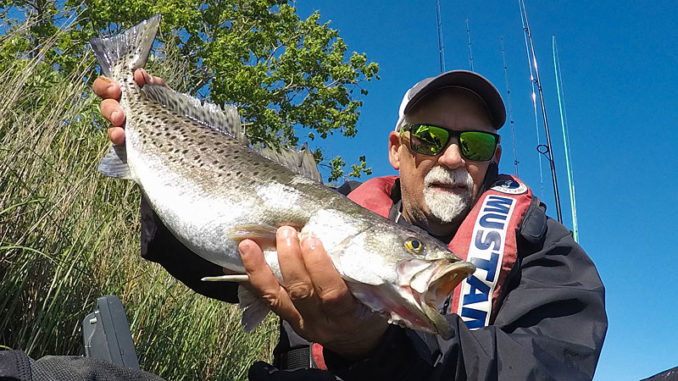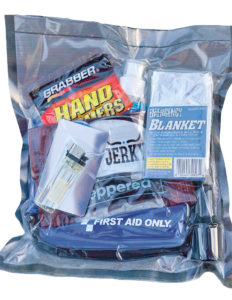
Do you ever put your kayak away? Not if you’re a careful, winter fisherman
I received an e-mail last week looking for tips on winterizing a kayak. Winterizing? What’s that?
Obviously, the sender did not know I live in south Louisiana. Of course, he was inquiring about the process of properly storing a kayak during the time when lakes are frozen over and ice fishing becomes the only option. Here, down South, the best way to winterize a kayak is to fish it as much as you can. With no closed fishing seasons and reasonably mild weather throughout most of the winter, fish can be safely caught out of a kayak year-round. No frozen waterways to deal with here.
Common sense is the first factor to employ when making the decision whether or not to fish in cold weather. If a major cold front blew through, the wind is howling 20-plus, the temperature plummeted below or near freezing and most every drop of water has drained from the marsh — stay home. However, with the proper gear and good decision-making, cold-weather fishing can be fun, productive, and safe.
Proper clothing
Catching fish is your secondary concern, with the first being to stay warm and dry. Getting wet and cold can quickly cause hypothermia, which can lead to serious health risks and even death. Proper clothing is a must. Wearing layers of quality technical clothing is the safest approach. You can add and subtract layers as the temperature changes throughout the day. Kayaking is a strenuous activity that causes perspiration. You need inner layers that are designed to be breathable and wick moisture away from the skin to keep you warm and dry. This applies to underwear (long and short) as well as base layers and socks.
Outer layers need to be wind and waterproof. This includes jackets, hats and gloves. Footwear should be ankle high at a minimum, with knee high being better. Breathable waders are a good substitute for waterproof pants and boots. Use a chest belt around the waders to prevent/slow water intrusion over the top in the event you end up in the water. An ample-sized dry bag is great for carrying and storing unused clothing as conditions dictate.
A plan in place
Always prepare a float plan to let friends or family know the general location of where you plan to be. If a rescue becomes necessary, this can help cut any search time and shave precious minutes or even hours off of the time to locate you. The less time you have to spend in harsh elements, the better.
A reliable means of communication is a must. Two means are even better. While many areas within kayak range have sufficient cell-phone service, some do not. Weather can also hamper signal strength. Carrying a small phone charger battery pack extends the life of your phone if necessary. A waterproof VHF is a great back-up device to be able to reach help should it become necessary. The U.S. Coast Guard monitors Channel 16 for emergency traffic, and a variety of commercial fishermen and marine traffic can be hailed on other channels.
A survival bag
Although you never plan to be stuck for hours or even into the night, it can happen. Keeping an emergency survival bag on the kayak at all times can be a literal lifesaver. Basics that all bags should include are first-aid supplies, a whistle, a signaling mirror, solar blanket, water, flashlight, a cigarette lighter, waterproof matches or other reliable fire starter. Add in some beef jerky or other high-protein snacks. If you have a vacuum sealer, all these items can be sealed, water-tight, in a compact package. Velcro the pack to the underside of a hatch or other location so it is out of the way, and always onboard.

Kayaking by its nature is a wet sport. You do not have to fall in or get caught in the rain to get wet. The drips from paddling or splashes from landing fish can get you wet enough to cause issues when it is cold. Pay attention to your body and take precautions if there are any signs of hypothermia.
Hypothermia
Normal internal body temperature is 98.6 degrees. Getting wet and cold can quickly lower that temperature and cause hypothermic conditions to affect your body. Shivering is one of the first signs. Your body involuntarily shivers in an attempt to generate heat. Take that as a sign that you need to add additional or dry clothing, warm up by a fire or cut the trip short and seek shelter. Warm liquids can also help, but avoid coffee, tea or alcohol, as these can worsen hypothermia and should never be used if you will be exposed to the cold. High energy foods also help resolve the symptoms.
Advanced stages of hypothermia can cause symptoms of sleepiness, disorientation and/or confused speech. If you or a fishing partner experience these symptoms, immediately head for dry land and seek medical attention.
There is no need to put away the kayak for the winter, as there are plenty of fish to be caught and generally the waters are much less crowded. Use some common sense, proper clothing and you can safely brave the elements and have a successful trip. Just pick days where the conditions are optimal and use the bad days to get things done around the house — or work on the kayak to prepare for the next trip.


